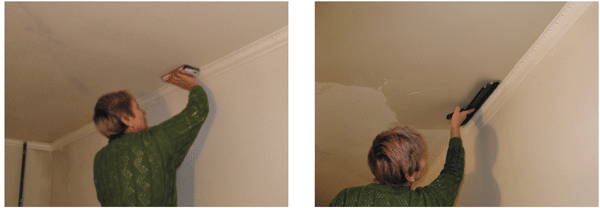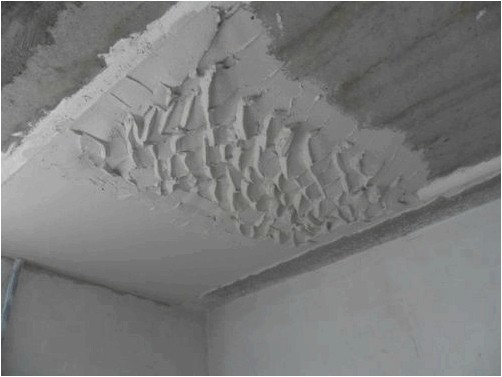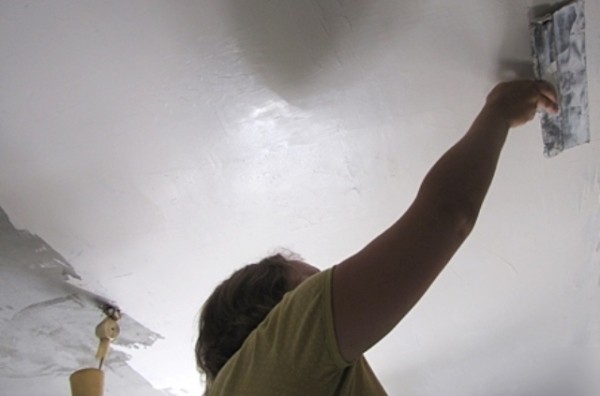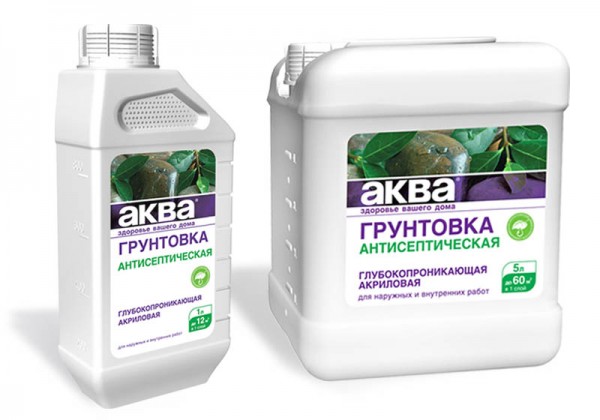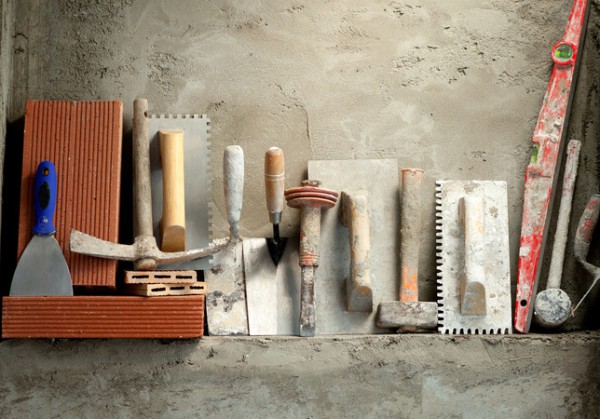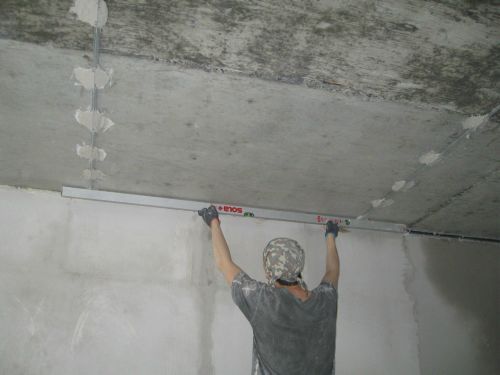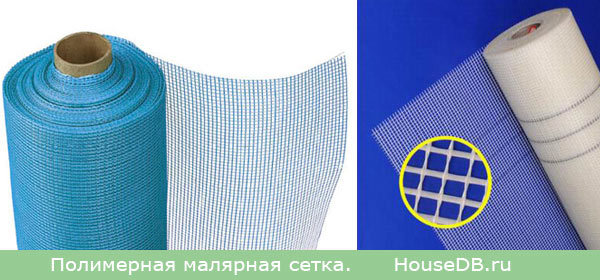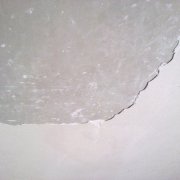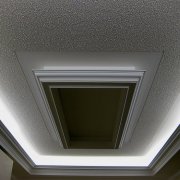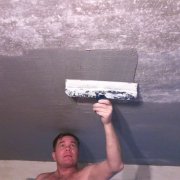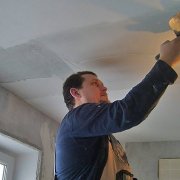How is plastering the ceiling
Ceiling plastering is the most popular finish. In any room, whether it is an apartment, an office building, a country house, a workshop, a warehouse - everywhere there are flat surfaces, plastered with a layer of a mixture of gypsum.
The process of applying plaster is very simple, you can do it yourself. Such a finish has both advantages over other options and disadvantages. Therefore, before choosing this type of finish, it is necessary to determine whether it is worth doing.
The content of the article
Features of stucco on the ceiling
The initial application of plaster on the ceilings is a must for many finishing methods. The technology of plastering ceilings has several advantages.
These include:
- Relatively low price. The cost of the materials used for work is much less than when applying any other coating.
- Space saving. Ceiling plaster minimizes room height loss. With the correct application of the solution, only three millimeters of height is taken away, which is especially true for small rooms where there are very low ceilings.
- Universality of application. Plaster is applied on any surface:
- concrete;
- brickwork (see Let's consider how to plaster a brick wall);
- wood.
On any type of floor, the coating will hold well and be equally strong. In this case, it is sufficient to correctly prepare the composition of the mixture and carefully perform the entire process according to the technology of the work.
The disadvantages of this option include:
- This is a rather time-consuming process that requires some professional skills.
- Even the smallest deviations from the coating technology can lead to undesirable consequences: the plastered ceiling will become covered with cracks, which can lead to a partial or complete fall off of the finish.
- Modern mixtures withstand increased humidity in the room, but it is dangerous for them to flood the neighbors. In this case, cosmetic repairs will be required, which will provoke additional spending of funds.
Types of plaster and its difference from putty
Plaster mix is a building mass applied to the surface of the ceiling. Manufacturers produce several types of plaster.
It may be in composition:
- Mineral.
- Gypsum (see Dry plaster gypsum mixture: features of use).
- Acrylic.
- Cement.
By purpose, the coating has several types:
- Leveling plaster for the ceiling. It is used to eliminate irregularities on the surface of the ceiling from blocks or masonry, the composition includes many different components.
Features of the mixture and the manufacturing technology of the material allows it to cope perfectly with the task of preparing the ceiling for pasting on it special ceiling wallpaper. The ideal ceiling surface is obtained by applying a plaster layer with a thickness of five millimeters to five centimeters.
Tip: If there are serious irregularities and flaws on the ceiling, the coating can be a thicker layer.
- Decorative plaster for ceilings. Such a coating is very often used to decorate and apply decor to the surface. The material is used in the design of the ceilings, to give them a luxurious and aesthetic appearance.
- Textured plaster on the ceiling. In this case, the surface gets its original shape.It should not be used for the kitchen due to the accumulation of dust, which will be quite difficult to remove from irregularities. The best textured coating for the ceiling - having a polymer base. It is less afraid of humidity, has greater resistance to abrasion during cleaning compared to mineral, the basis of which is cement and lime, and silicate, made on the basis of liquid glass.
- Venetian plaster ceiling is used relatively rarely, it is often applied to the walls. Previously, it consisted of marble chips and beeswax. Currently, the binder is acrylic resin.
Ceiling plaster should not be confused with finishing putty. These are completely different coatings. Plaster eliminates elevation changes, levels the surface and prepares it for applying the finishing layer - putty. It is based on coarse mixtures of cement and gypsum.
Putty is a finishing leveling layer, it is placed on the plastered surface. The process is carried out with finely dispersed mixtures, the main ingredient of which is building gypsum. Its last layer does not exceed the thickness of three millimeters, and the finishing plaster is up to five centimeters.
How to prepare the surface
If on the surface:
- The old ceiling plaster, which is affected by the fungus, is partially destroyed.
- There are deep cracks in the joints and differences in height.
The instruction for preparing the ceiling offers:
- Moisten the surface with water over the entire area.
Tip: The ceiling should be moistened at least twice with a break of up to three hours. Water will allow the separation of the old coating to be made easier, and during processing, dust will be significantly less.
- With a trowel, the surface of the ceiling is cleaned to the surface of the floor slab. At the seams between adjacent plates, all stuck stucco is removed.
- The remaining lime and cement dust are washed off with a normal wet sponge.
- Applied antifungal primer to protect the surface from fungus. In this case, the areas affected by mold should be treated with an overlap of at least 20 centimeters. In a damp room it is better to finish the ceiling completely.
Tip: To remove mold, any liquid containing chlorine can be used. It can be White or its analogues.
- The ceiling is primed with a primer. The penetrating mortar strengthens the outer layer of concrete and improves its adhesion to the plaster. After this treatment, the surface remains to dry for a day. In this case, it is necessary to maintain optimal humidity and temperature.
Before applying the plaster to the ceiling, tools are prepared.
The photo shows an approximate set of tools for plastering.
How to choose plaster and align significant differences in the ceiling
For plastering ceilings, you can use cement-lime compounds or modern gypsum mixtures.
Tip: Gypsum compounds should be used to finish the ceiling.
Advantages of gypsum plaster:
- To a reasonable extent tolerates the period of shrinkage of the house. When using a cement-lime composition, under the same conditions, cracks occur.
- Adhesion or adhesion of such a coating to a concrete surface is better. Gypsum putty can be sprayed and spread onto the surface.
- Rothband application by Knauf is an excellent solution at an affordable cost.
Plastering on the ceiling beacons makes it easy to align large differences on the surface.
For this:
- Using laser or water levels, the lower point of the ceiling prepared for decoration is determined.
- By 10 millimeters stepping down from this point, the plastering line is beaten off, and beacon profiles are fixed.The easiest way to fix them evenly is to pull a thread between the studs driven into a horizontal line and stick a few stucco plaster on the ceiling in a line, and press the profile into the putty, guided by the thread. After that, you can install the following profile.
- Between profiles, the pitch should be 20 centimeters less than the length of the rule. Although the short rule is more convenient to work with, the long one makes it possible to put the beacons on, which will make it possible to evenly plaster the ceilings.
- Lighthouses make it possible to correctly choose the thickness of the plaster layer.
- The plaster is spread on the ceiling with a trowel of medium width so that the material protrudes beyond the lighthouses, and its excess is removed by a rule that moves in a zigzag shape, and not in a straight line.
Tip: At a time, apply a layer up to two centimeters thick. With large irregularities, the first layer should dry well and only then apply the second.
- When coating in two layers before the second, the ceiling between two beacons is reinforced with a special synthetic mesh, which is pressed into the fresh plaster, overlapping at the seams of the mesh up to ten centimeters. Using a mesh will prevent cracking and material shedding.
How is ceiling plastering done? Video tutorials show the process in full detail.
How to finish the ceiling
Fine alignment of the ceiling is carried out by puttying with a wide spatula.
The solution is best applied as thin as possible in two layers at intervals for complete drying of the first layer. After that, the ceiling is ground using a hand grater with a sanding mesh. To save time, you can use a grinding machine.
How to plaster the ceiling, what tools are needed and the coating technology can be seen in the video in this article.
Tags: concrete